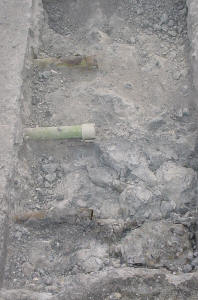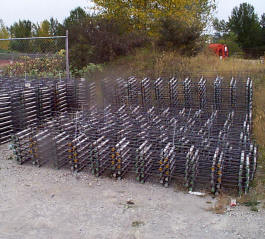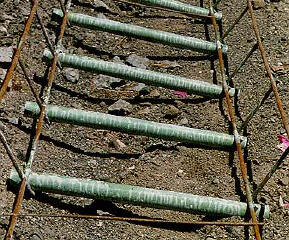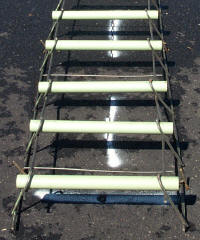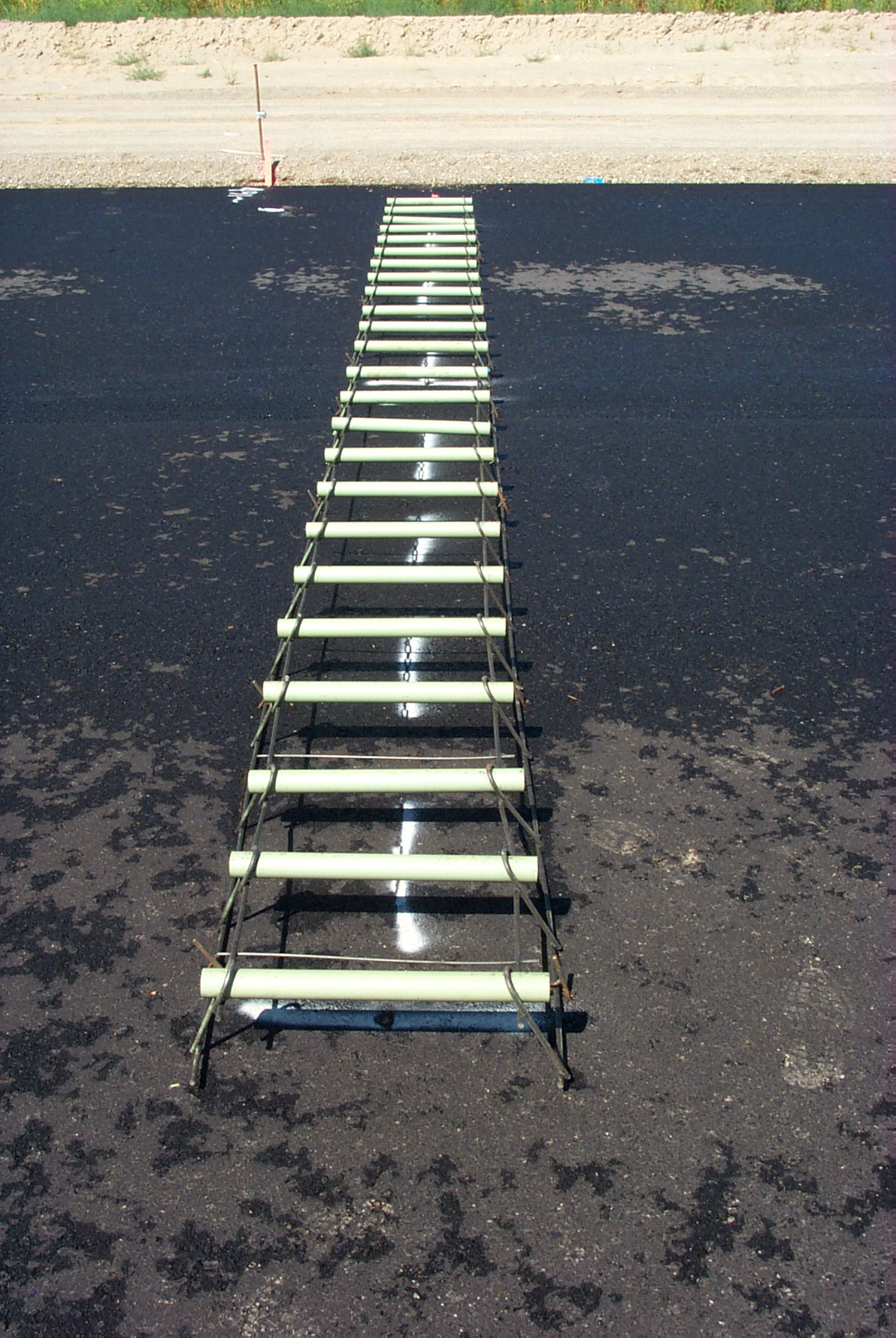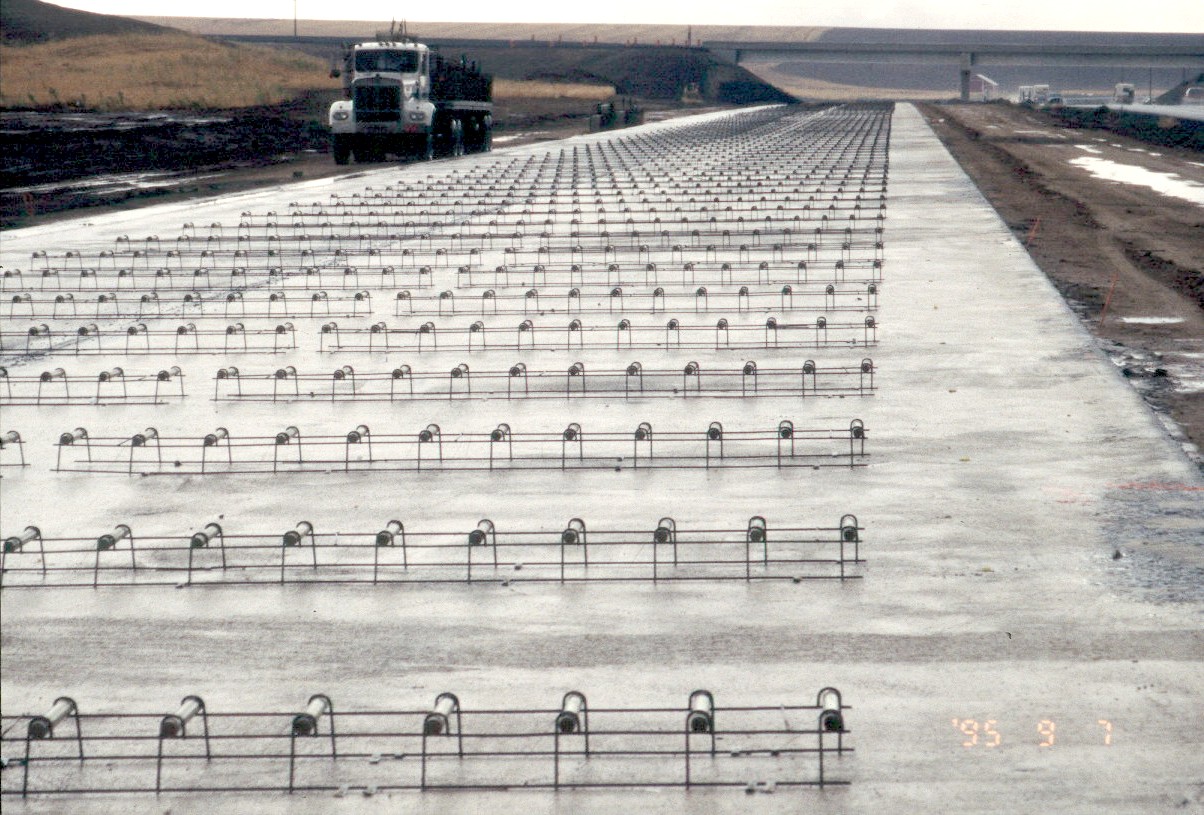Dowel bars can be placed either before PCC placement by using dowel baskets, or after PCC placement by using an automatic dowel bar inserter. Their placement is crucial to proper joint load transfer. Skewed, shallow or excessively corroded dowels can fail causing faulting and/or cracking at the joint.
Dowel Bar Preparation
Dowel bars must be protected from corrosion (see Figure 1); although joints are sealed to keep water penetration to a minimum, water will seep in over time and, combined with deicing salts, may corrode unprotected bars. Typically dowel bars are protected from corrosion by the application of epoxy coating or stainless steel cladding (see Figure 2). Additionally, dowels should be lightly coated with a lubricant such as grease or oil to prevent bonding with the PCC. The FHWA notes “…The dowel must be free to slide in the concrete so that the two pavement slabs move independently, thus preventing excessive pavement stresses. Only a thin coating should be used, as a thick coating may result in large voids in the concrete around the dowels” (FHWA, 1990a[1]). Figure 3 shows dowel bars with excessive lubricant (notice how it is dripping off the dowel bars), while Figure 4 shows one with the correct amount of lubricant.
Dowel Baskets
Dowel baskets (Figures 5 and 6) are simple truss structures used to hold dowel bars at the appropriate height before PCC placement. Typically, dowel baskets span an entire lane width and are fabricated from thick gauge wire. They are left in place after the PCC is placed but do not contribute to the pavement structure.
When using dowel baskets, the dowels must be properly aligned and the dowel basket firmly anchored to the base course. The FHWA recommends that the dowel baskets be secured with steel stakes with a minimum diameter of 8 mm (0.3 inches) embedded at least 100 mm (4 inches) in stabilized bases, 150 mm (6 inches) in treated permeable bases and 250 mm (10 inches) for untreated bases or subgrade. Further, a minimum of 8 stakes per basket is recommended.
Dowel Bar Inserters (Slipform Paving)
Dowel bar inserters are automated attachments to slipform pavers that allow the paver to insert transverse joint dowel bars as part of the slipform paving process. Dowel bar insertion usually occurs after the vibrator but before the tamper bar. Dowel bars are placed on the fresh PCC surface then pushed down to the correct elevation by a series forked rods. The rods are usually vibrated while they insert the dowel bar in order to (1) ease insertion and (2) help move the PCC back into the space created by the insertion.
Dowel Bar Locations
The conventional approach to dowel bar placement in new pavement construction is to place 11 bars for a 12-foot lane, starting with the first bar located 12 inches from the pavement edge, with all of the bars placed 12 inches apart from the next adjacent bar. For a dowel bar retrofit, this is modified to place three or four dowel bars in each wheelpath, again with the dowel bars in the same wheelpath placed 12 inches apart (WSDOT, 2013[2]).
- Federal Highway Administration (FHWA). (1990a). Concrete Pavement Joints. Technical Advisory 5040.30. Federal Highway Administration. Washington, D.C.↵
- Washington State Department of Transportation (WSDOT). (2013). Dowel Bars for New and Existing Concrete Pavements.↵

